【新唐人2011年7月27日訊】7月23號晚上 8點27分發生的福建溫州動車慘案,不僅讓神州大地為之哀痛,也成為國際社會聚焦的熱點。曾經向中國高鐵建設提供了技術轉讓的日本,對事故給予極大關注。25號,日本外務副大臣伴野豐向中共當局提出:要認真查明事故原因。有學者指出,日本高鐵49年未發生死亡事故,即便是小事故,也會耗費數個月以上的時間認真調查,不會草率解決。
溫州動車慘案發生後,事故的原因分析成了各界輿論的焦點。大陸鐵道部新聞發言人王勇平24號表示,初步了解,追尾事故的原因是雷擊造成設備故障導致的。
日本媒體25號報導說,發生追尾的列車很可能是由日本「川崎重工」提供技術的CRH2型列車。
不過,日本《朝日新聞》援引日本鐵路公司「新幹線」技術人員的話報導說,中國高鐵採用的日本技術只有車輛,信號等「運行系統」是中國獨自開發的。這位技術人員分析,如果事故是「追尾」造成的,原因就不是「車輛」而很有可能是「運行系統」的故障。
日本外務副大臣伴野豐25號在記者會上就「動車追尾事故」表示說:“中國(共)政府應該查明原因努力防止再次發生事故。” 日本最後一段。
24號凌晨4點,事故發生僅8個小時後,鐵道部就聲稱搜救結束,並將追尾列車的車頭掩埋。 24號下午 5點 50分左右,兩歲半女童項瑋伊被發現並獲救。
鐵道部的舉措引發了強烈的輿論質疑。伴野豐也就此表示,希望中方改善應對措施。
「當代中國研究中心」的學者楊中美對《美國之音》說,日本高鐵近半個世紀,也沒有死人事故發生。即便發生其他故障,也是每次數個月、半年甚至一年的時間尋找問題,直到解決為止。
日本民眾春野小姐覺得難以理解。她說,在日本是根本不會發生這樣的事情。
日本春野小姐:“ 絕對不會的,這是常識吧,不是重要的證據嗎?損壞了這麼重要的證據,會讓人懷疑是不是打算好好調查 。”
在大陸新浪微博的民調也顯示,認為當局這個舉動的目地是「毀滅證據」的佔 98%。
而在事故發生34小時後,事故路段25號恢復全面通車。
日本春野小姐:“事故發生還沒過38小時,許多事情還沒弄明白,就重新開始通車,連客人的生命安全都不知道能不能保證吧。如果在日本發生了這樣的事故,沒查清原因之前一定不會讓重新通車的。”
中國高鐵線路開通只有四年功夫,但中國高鐵已經成為全世界最長。從明年開始,中國高鐵還將延長到一萬三千公里。據說這個速度是日本的4倍。
香港《蘋果日報》的評論說,從高鐵、動車的超速發展,到現場救援的草率,顯示當局的心態是:快速發展比人命重要、世界第一比安全重要、恢復通車比救人重要!
而春野小姐小姐說,如果有機會去中國的話,她恐怕不打算坐中國的高鐵。
旅日學者楊中美則認為,中共當局鉅額投資建設鐵路,支撐經濟快速增長,一下買了德國、法國、加拿大、日本四國的技術,搞了一次大躍進,又加上中共體制腐敗,各級官員都貪污,就把高鐵搞糟了。
新唐人記者李靜、蕭宇採訪報導。
High Speed Rail Accidents
not only shook China, but also gained world attention.
Japan, who sold high speed rail technology to China,
also paid great attention over the incident.
On July 25,
Japanese Deputy Minister of Foreign Affairs,
Yutaka Banno told the Chinese government:
to take great care to find the cause.
Some scholars pointed out that
Japan hadn』t had a high speed rail accident in 49 years.
Even for small incidents, the Japanese would spend months
meticulously investigating them.
After the Wenzhou high speed rail accident, all sides are
trying to find out the cause.
China Ministry of Railways spokesperson Wang Yongping
said on July 24 that
the preliminary investigation points to
equipment failure after the lightening strike.
Japanese media reported on July 25 that
the trains involved were probably CRH2 trains that
bought the technology from
Kawasaki Heavy Industry, LTD.
However, according to the Japanese Asahi News』
interview with a Japanese train engineer,
China』s high speed rail only adopted Japan』s train technology;
the operating system, however, was developed by China.
The engineer said, if it was a rear-end collision,
then it』s the operating system to blame.
Japanese Deputy Secretary for Foreign Affairs,
Yutaka Banno, said on July 25 that
China should find out the cause of the accident
and prevent the same from taking place in the future.
8 hours after the accident, at 4 a.m. on July 24,
the Ministry of Rails announced conclusion to the rescue,
and buried the front carriage of the rear-end train.
Around 5:50 p.m. on the same day, rescuers found
a 2.5-year-old female survivor, Xiang Weiyi.
The ministry』s actions were called into question
by the public.
Scholar Yang Zhongwei of Contemporary China
Research Center said that
Japan hadn』t had an accident in the past half a century.
When they had malfunctions, they spent months and years
trying to find out the cause.
Ms. Haruno from Japan said that it』s incomprehensible;
this would not happen in Japan.
Ms. Haruno: No way, this is common sense.
These [carriages] are important evidences.
Why do they destroy them?
It casts doubts on their willingness to investigate.”
According to a poll on China』s Sina microblog, 98% believe
the ministry is trying to cover up and destroy evidences.
34 hours after the accident,
the track involved in the accident had resumed traffic.
Ms Haruno: It』s no more than 38 hours
since the accident,
they don』t even know the full extend of the accident,
yet they have reopened the track for traffic.
They don』t know if it』s safe for passengers.
If this were in Japan, they would not open the tracks
until they discover the cause of the collision.”
China only took 4 years to build
the longest high speed rail tracks in the world,
and come 2012,
the rails would extend to 13,000 Km [808 Mi].
That』s about 4 times the length of the
Japanese bullet train tracks.
Hong Kong』s Apple Daily』s editorial comments that from
high speed rail』s speeding to the sloppiness of the rescue,
all reflect that the authorities put growth over human lives,
“world』s no.1” over safety,
and resuming traffic over rescuing survivors.
Ms. Haruno said if she should visit China,
she』s would not plan to take the high speed rail.
Chinese scholar residing in Japan, Yang Zhongmwei,
Said that the Chinese government invested a great deal
into the rails to support the economic growth.
They purchased technologies from Germany, France,
Canada and Japan, creating another “Great Leap Forward.”
The corruption in various levels of government and party,
has made the rail to rot from within.
NTD reporters Li Jing and Xiao Yu
看下一集

【禁聞】國際貨幣基金組織 促人民幣升值

【禁聞】賴案涉深高層黑幕 胡掌牌分化江派
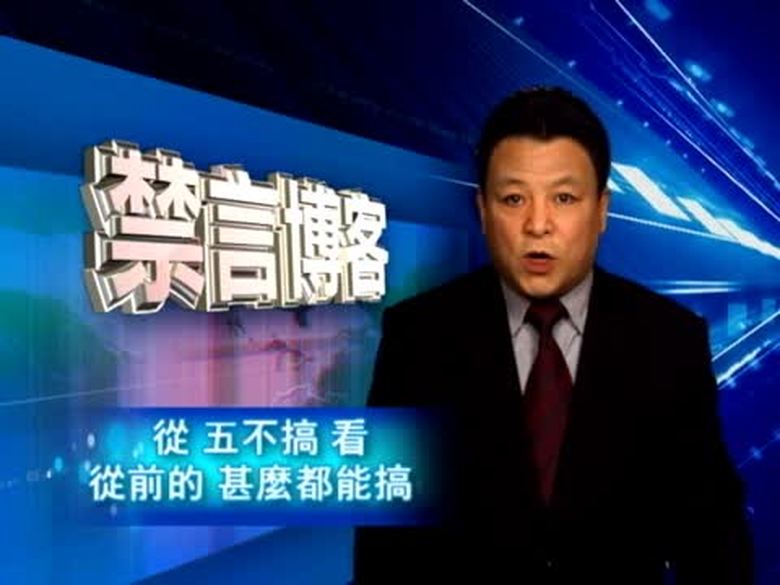
【禁言博客】貪官經驗交流會上的講話
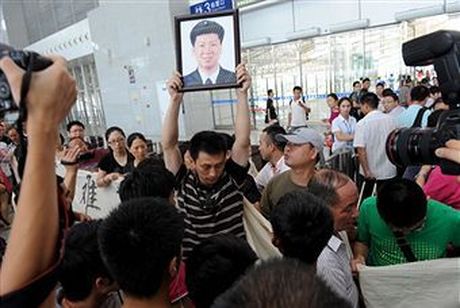
【禁聞】溫州事故引民憤 傳媒特警抗命

【禁聞】慘劇震裂鐵道腐敗王國 引高層整肅
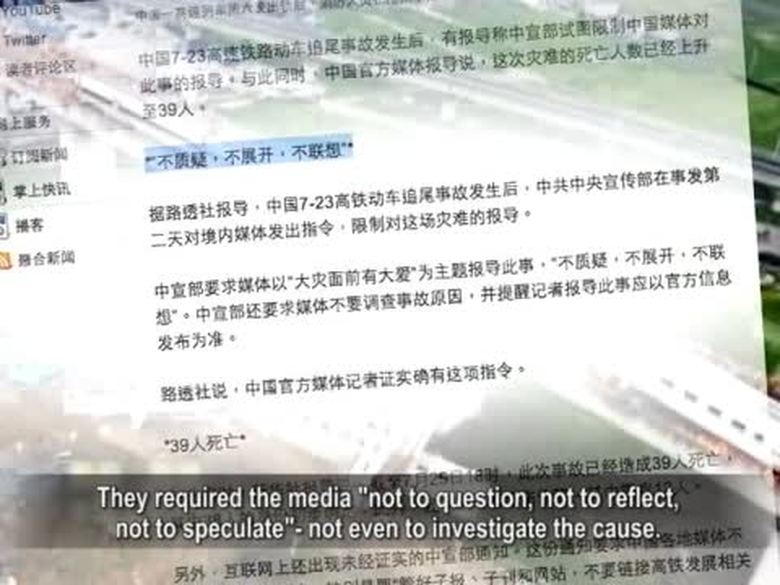
【禁聞】高鐵事故主因 中宣部令不報導
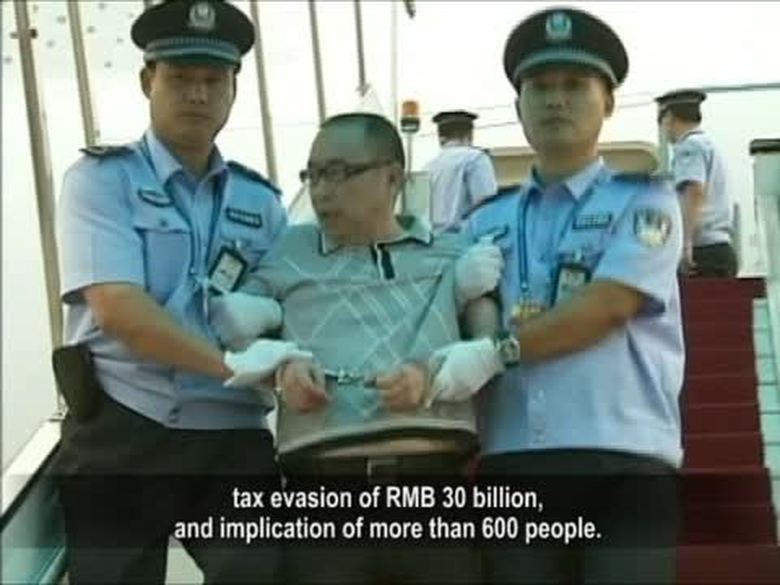
【禁聞】賴昌星案是否涉及中南海 民眾熱議
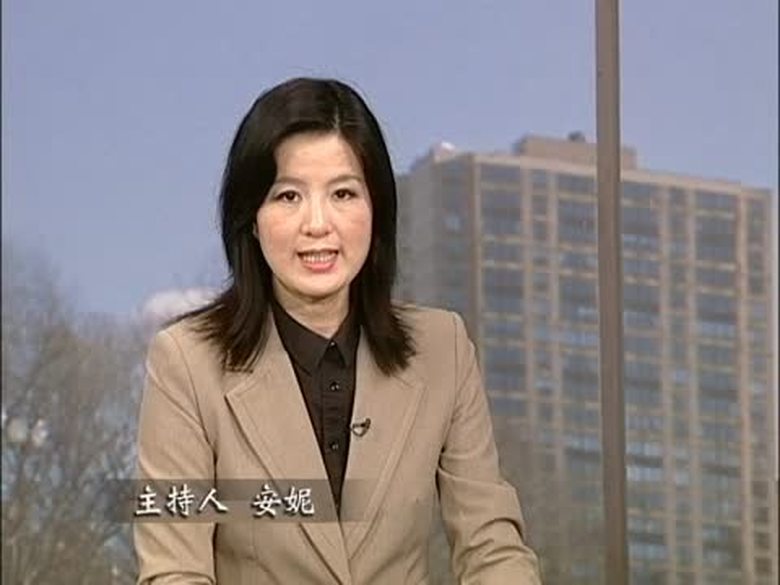
【禁聞論壇】中國人,你為甚麼不生氣?

【禁聞】中國改裝航母欲試水 外界反應不一

【禁聞】溫州慘劇媒體起義 主播藝人露真性

【禁聞】高鐵趕工獻禮釀災 慘案調查遭質疑

【禁聞】動車慘劇對比中共時代廣場廣告

【禁聞】信號系統出錯 無其他安全預案?

【禁聞】評論:中國高鐵“大躍進”

【禁聞】動車事故 信號領域壟斷暴利露倪端

【禁聞】否天災 溫州動車慘案疑點猶未解








